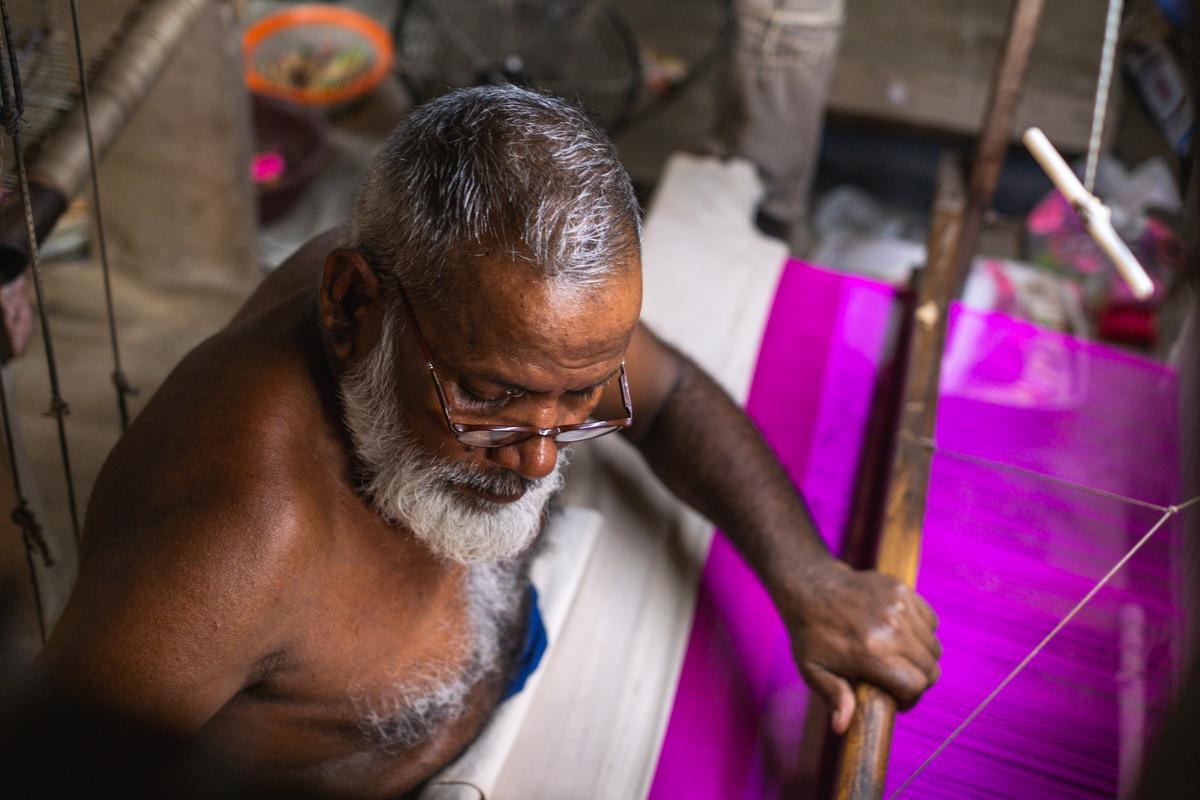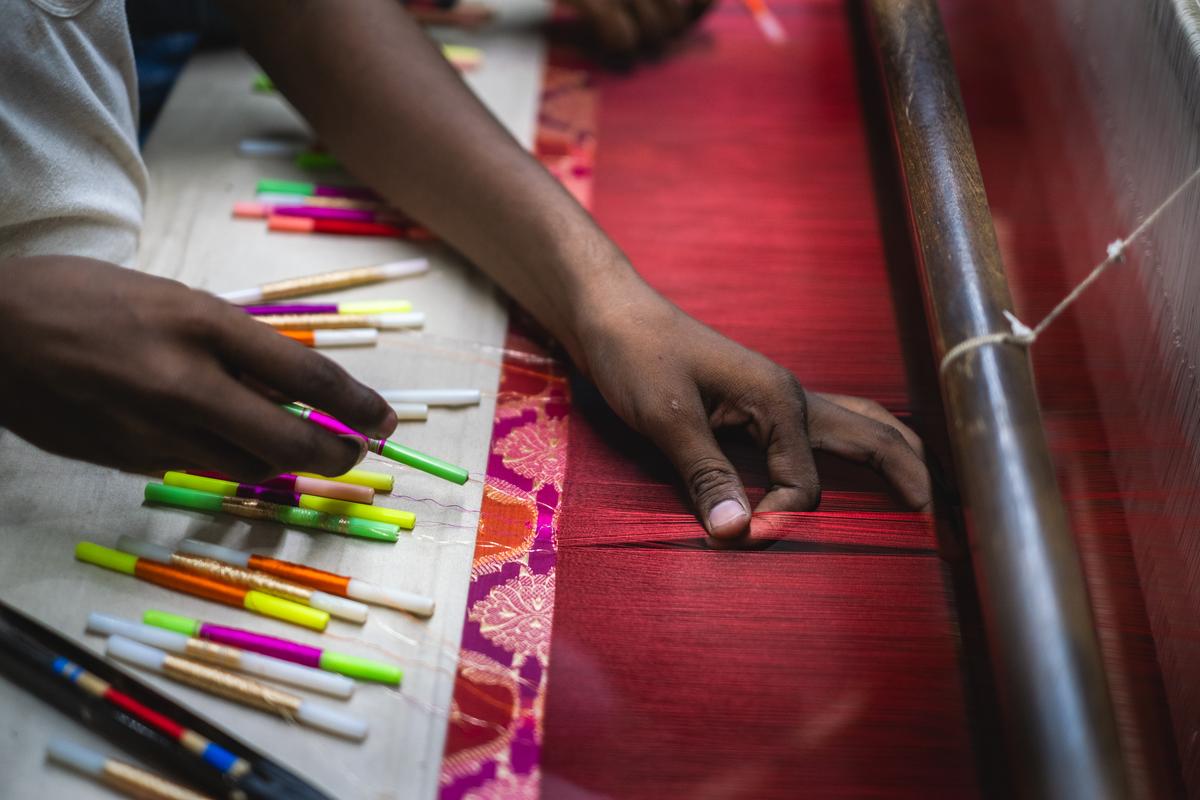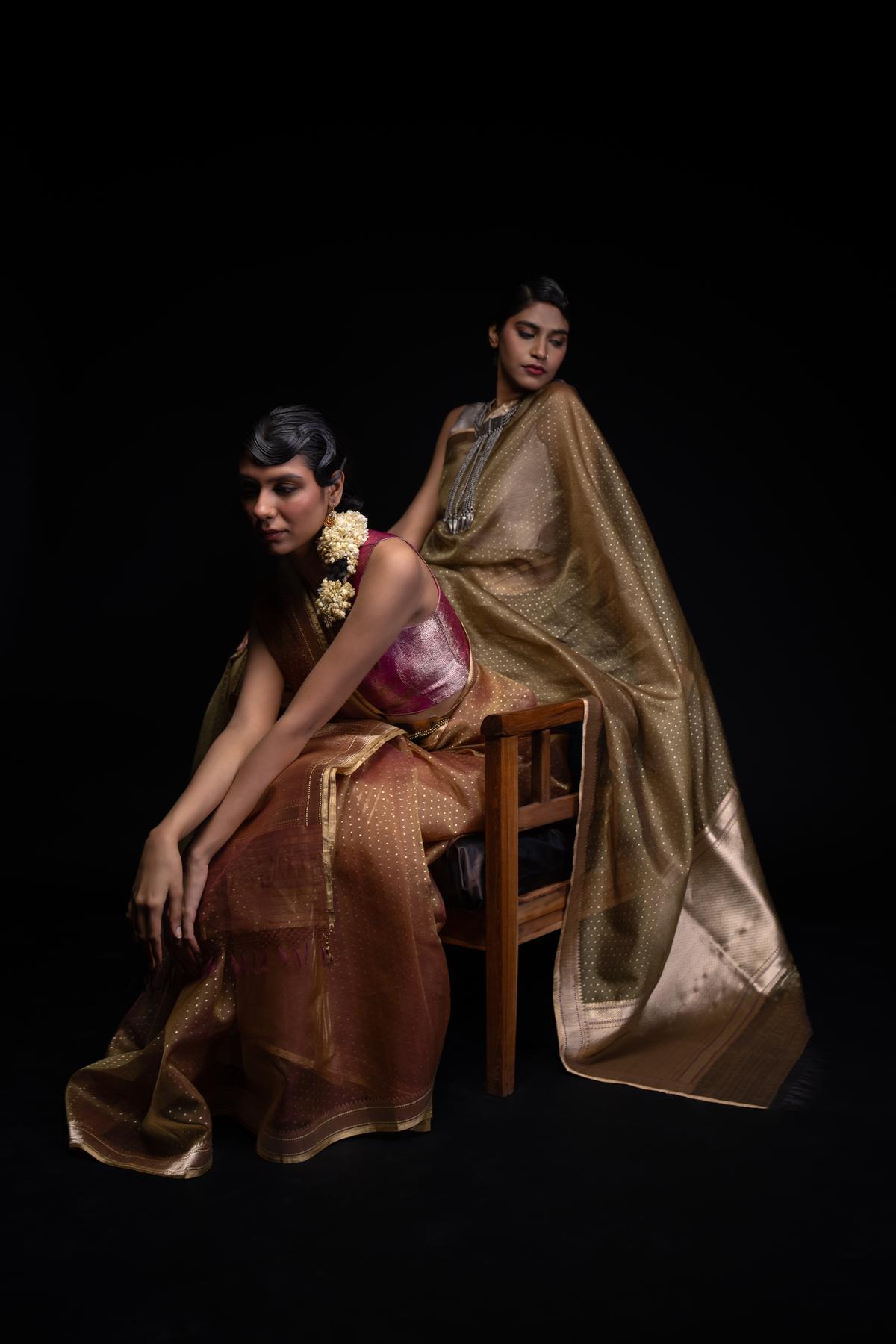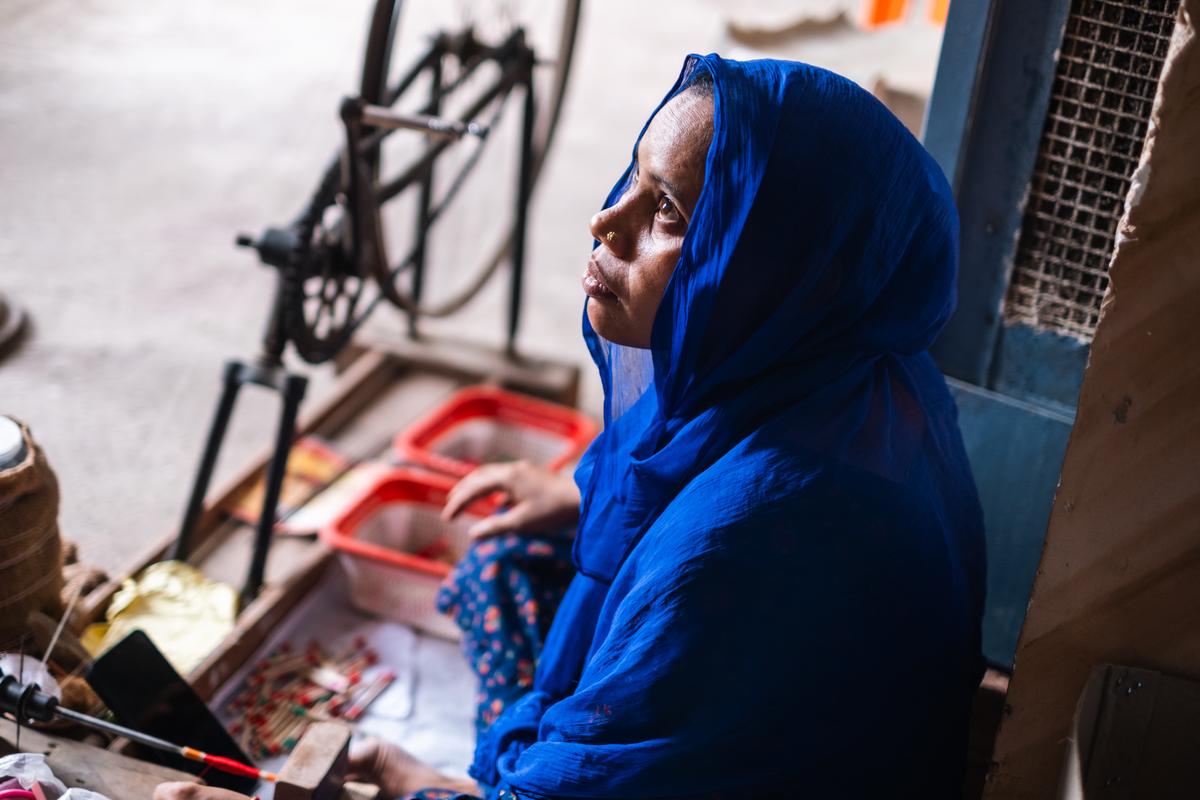In the latest season of the hit comedy drama The Bear, Alpana Singh, a Chicago-based sommelier of Indian origin appearing as herself, rather poetically describes a bottle of wine as “a liquid snapshot of time”. The wine, she explains, captures “everything that was happening for that year, what the summer was like, what the rains were like”.
A Banarasi textile isn’t very different; just tweak the single year to millennia. If Banaras is a city older than history, as Mark Twain said, its handloom weaves are not too far behind. Among India’s most storied textiles — as also among the most revered and most recorded — they contain multiple layers of history, heritage, innovation, reinvention. They tell of ancient trade with China, where its mainstay mulberry silk came from, they showcase Mughal influences in their brocade motifs, and they talk of changing tastes as pastels and subtle zari gave way to bright wedding-ready colours and all-over jangla (from jungle) work at the turn of the century.
That was the time, in fact, that the Lucknow-born Chandra Jain turned away from the Banarasi altogether, despite an in-born love for Indian textiles. “What was available simply didn’t match up to the saris I’d grown up seeing in my family,” she says. “Then, in 2002, I happened to meet a master weaver in Varanasi. I was carrying some old samples and I asked him why it was impossible to find work of that quality. He told me there was no demand for fine Banarasis at commensurate price points.”

A master weaver in Varanasi
At the same time, she learnt, the weaving community was more than ready to take up the challenge of recreating work of older standards — as long as they didn’t have to be responsible for marketing it. Though Jain had no plans of building a brand, she couldn’t let the opportunity pass. Over the years, she has taken her small, high-end revival collections to select clients all over the country under the label Kimkhab.
Next week, Jain’s two-decade-old passion for the Banarasi finds expression in River Weaves, a first-of-its-kind exhibition in her adopted home, Bengaluru. Designed by Siddhartha Das Studio, the display promises all the gravitas of a museum and none of its stuffiness; instead, the focus will be on storytelling, tracing the journey of the silk from the cocoon to the loom. “And that’s partly the reason why we are opening this in Bengaluru — after all, Karnataka is India’s largest producer of silk, and the origin of the country’s own silk route,” says the septuagenarian.

A Banarasi sari in progress
Going back to the original
To be installed across 2,000 sq.ft. at the Bangalore International Centre, the exhibition will comprise several broad, visually strong sections. Using specially commissioned art, photographs and literature, River Weaves will look to recreate the entire ecosystem of the Banarasi weave to build awareness of the months of effort on the part of multiple people that go into the finished product. “My master weaver once counted 40 people who contributed to the yarn before his karigars even touched it,” says Jain, a long-time executive committee member of the Crafts Council of Karnataka.
Of the various sections of River Weaves — the exhibition is dedicated to the Ganga, on whose banks the craft has thrived for centuries — the one that is sure to draw the cognoscenti is the showcase of natural dyes. Jain worked with natural dyes expert Jagada Rajappa to re-introduce colours extracted from sources such as manjishtha (Indian madder), indigo, onion peels and henna. “These were the original shades of Banarasis, before the demand grew for chemically produced colours,” she says.

The exhibition has a showcase of natural dyes
Saris that stand out
The most impactful saris are the emblematic ones — that we all associate with Banarasi brocades — as well those made with natural dyes, according to Siddhartha Das and Chiara Nath of Siddhartha Das Studio. The insignia for the show is derived from a gorgeous grey and cream jangla jaal sari featuring a shikargah. “This type of scene is amongst the most recognisable of Banarasi patterns. It spreads across the surface with movement and narrative, and when worn, it almost feels like the forest is coming alive, with gazelles overpowered by lions, falcons swooping down on prey, and with horses, huntsmen, elephants, musketeers and peacocks,” says Nath.
“What we also really appreciate about this piece is that it appears in other formats such as wall hangings and tapestries. And of course it is widely represented in Mughal miniature paintings – a genre very close to our hearts. Then there is the celebrated rangkat sari, from which we derived the cover art for the monograph. It is characterised by alternating sections of many colours, and requires the use of several sets of weft threads. These ‘waves’ are interlocked with brocading in zari. They appear to be almost appliquéd in place. Finally, the Bahramasa collection is very close to our hearts because it is made entirely from natural dyes. We found the hues stunning and the saris wonderfully contemporary.”

Seated in her impeccably decorated living room in Indiranagar, Jain unfurls a lustrous peachy-pink silk with a narrow border and a beautiful pallu with real silver zari. The colour is derived from lac, she informs me. It’s a shade in a Banarasi that I last saw in my mum’s wardrobe, in a sari dating back probably to the 1960s. The age-old discontinuous kadwa zari butis (one of the two principal techniques of Banarasi weaves, these extra-weft motifs are woven individually) float across the body of the sari with a three-dimensional effect (compared to, say, the flat outcome of jamdani, also an extra-weft weaving technique). The underside is as neat as the front.
Chandra Jain
Passing the parcel
Even as I pore over the exquisite workmanship of the saris — perfect paisleys in one, a strip of jangla work in another, beautiful koniyas (corner motifs, a speciality of Banarasis) in a third — I wonder how to square Jain’s revival work with, say, the popularity of the Banarasi sari, as evidenced in social media (#dilhaiBanarasi was a viral trend on Instagram for several years till its leader went off the platform). Jain acknowledges that the Banarasi, by and large, is much better off than many other weaves in the country: its status as wedding or special occasion wear, and its success in light, easier-to-drape and translucent fabrics like kora and organza have found takers among new sari patrons. “But unless people know what the craftsmen are capable of, this kind of fine work will die out,” she says.

A weaver in banaras
Jain sees herself as a custodian of this living, breathing textile legacy, “passing the parcel” of the heritage weave to the next generation. It is in this spirit that she tells her weavers to feel free to share the revival designs with other customers, and hopes to take River Weaves to other cities in India and maybe even abroad. “These are not my designs,” she says emphatically. “These contain centuries of thought.”
River Weaves opens at the Bangalore International Centre on August 14. Alongside the exhibition, Kimkhab will present saris for sale, priced between ₹20,000 and ₹2,00,000.
The writer and editor is based in Bengaluru.
Published – August 09, 2025 08:18 am IST

